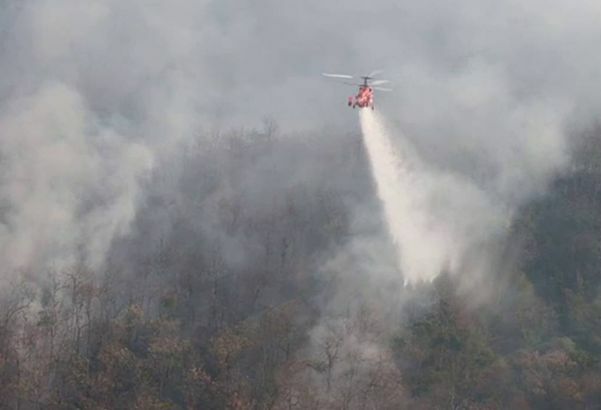Officials say 90% of northern Thailand’s hotspots caused by human activity

The director-general of Thailand’s Pollution Control Department says around 90% of the hotspots in northern Thailand are caused by human activities. Director-General Pinsak Suraswadi said the PM2.5 atmospheric pollution in the region is expected to increase before it improves.
Pinsak said that 90% of the hotspots were detected in conserved forests and that the problem would be worse between Saturday, March 3, and Friday, March 10, with higher levels of dust reported in Chiang Mai, Lamphun, Sukhothai, and Phitsanuloke.
Pinsak revealed that there is a high concentration of sugarcane farms and sugar millers in Phitsanuloke, Uttaradit, Sukhothai, Kamphaeng Phet, Phichit, and Phetchabun provinces. Farmers have been burning their crops at an accelerated rate, as some millers are starting to shut down their operations, Thai PBS reported.
The Geoinformatics and Space Technology Development Agency (GISTDA) surveyed the western and northern regions. GISTA confirmed that burning crops such as sugarcane and maize waste to prepare the land for the next round of cultivation is believed to be the cause of the increased hotspots.
Meanwhile, hotspots in Myanmar account for only 5% of the dust problem in northern Thailand.
The IQAir website reported today that Chiang Mai has the fifth worst air quality of any city in the world, with the quality measured at 168 on the Air Quality Index (AQI). On Friday, the city’s air quality was the second worst in the world, with an AQI of 177. Chiang Mai’s air is reportedly affecting the health of people across the province.
Pinsak said that setting up a command centre in each province, and deploying thousands of volunteers to fight the fires, is treating the symptoms without addressing the root cause. He urged the public to be on the lookout for people starting fires and to notify authorities.
Northern Thailand is seeing thousands of fire hotspots, with some 2,201 detected last week. The upper part of the region had 1,388 hotspots last week, while the lower north had 813. From December 1 to February 28, northern Thailand had 31,971 hotspots
The number of hotspots during the same period in 2022 was 13,351. In 2021, the number was 33,430. The increase in hotspots is a major factor in raising PM2.5 levels above the government-set safe level of 50 microgrammes per cubic metre in most northern provinces.
Latest Thailand News
Follow The Thaiger on Google News:


























